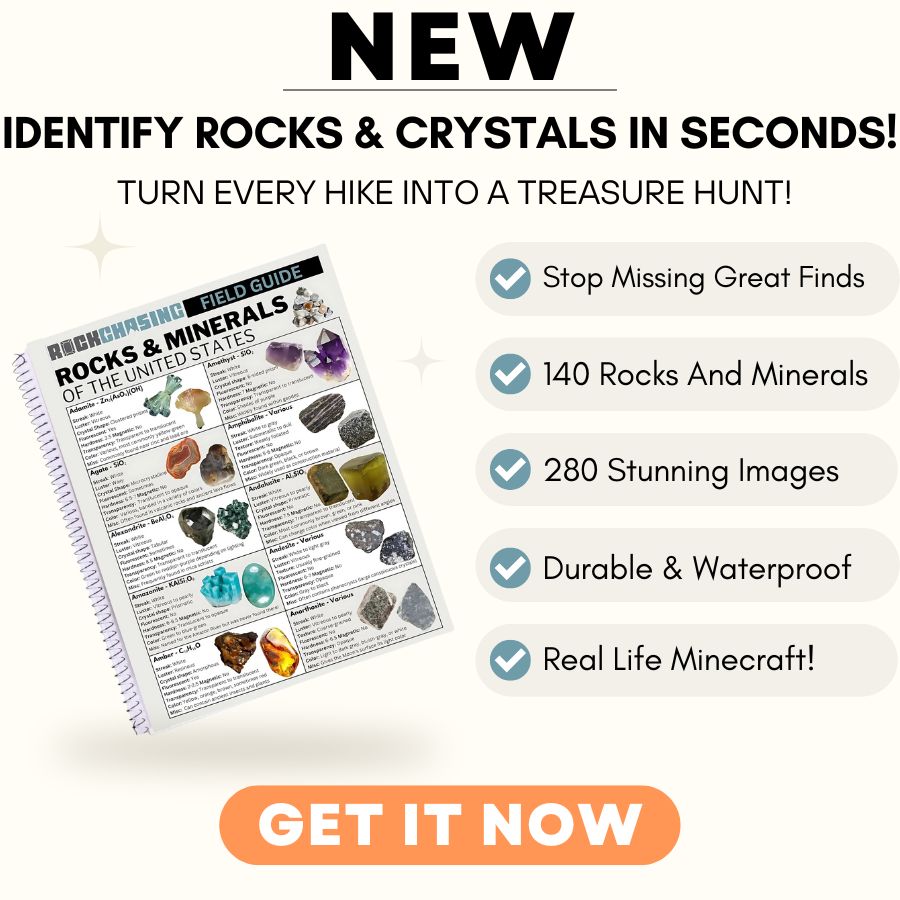Michigan has some cool rocks hidden in its land. The state’s rocky areas sometimes reveal rhodochrosite to lucky searchers. This pink mineral sits in certain spots across Michigan, waiting for rock lovers to discover it.
Finding rhodochrosite takes time and patience. You might need to look in several places before coming across this pretty stone. Some areas, however, are better than others.
I’ll show you where to look in Michigan for rhodochrosite, covering the best spots that often yield this gem. These locations have helped many collectors add this mineral to their collections over the years.
How Rhodochrosite Forms Here
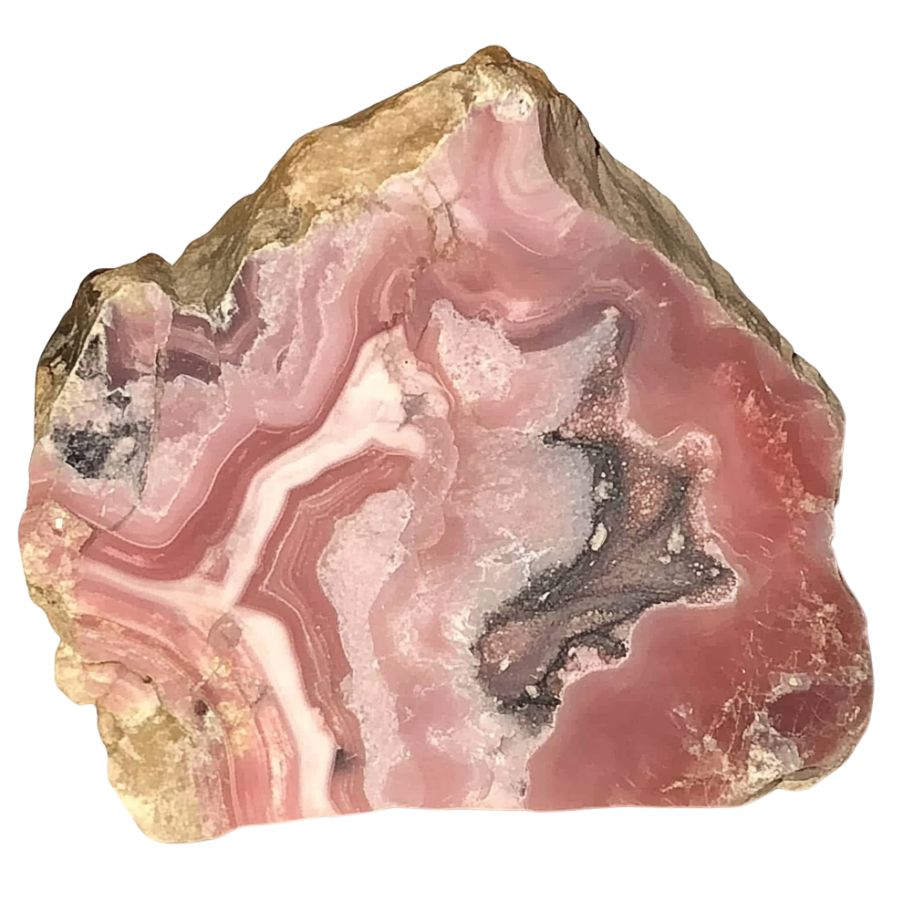
Rhodochrosite forms from manganese-rich waters seeping through cracks in rocks. When these mineral-heavy solutions mix with carbonate materials (like limestone), the magic happens!
Over time, as temperatures and pressures change deep underground, the manganese and carbonate ions come together and slowly crystallize. Sometimes, it forms in beautiful stalactites in empty spaces in rocks, while other times it shows up in hydrothermal veins alongside other minerals.
The most stunning specimens often form when the conditions are just right (not too hot, not too cold) letting the crystals grow slowly into those gorgeous pink rhombohedral shapes we love so much.
Types of Rhodochrosite
Rhodochrosite occurs in several distinct varieties. From delicate pink bands to deep crimson crystals, these variations showcase the diverse beauty of this remarkable mineral.
Pink Rhodochrosite
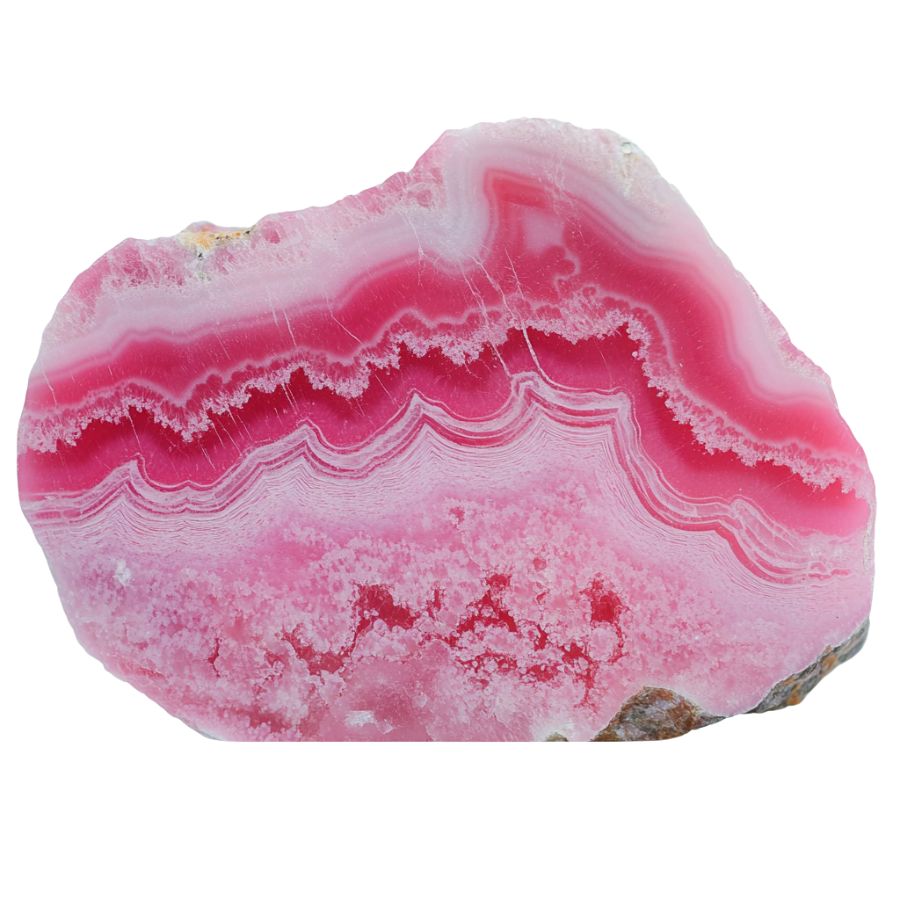
Pink Rhodochrosite displays delicate pink shades that range from soft pastel to deep rose pink. The stone features beautiful banding patterns that create swirling designs throughout its surface.
The translucent to semi-translucent nature of Pink Rhodochrosite adds to its visual appeal. This stone has a special trigonal crystal system that sometimes produces rare transparent crystals.
Fine specimens with clear, transparent crystals are particularly valuable. The best examples show sharp color zones and distinct banding patterns. Stone’s intricate patterns often resemble landscapes or abstract art.
Red Rhodochrosite
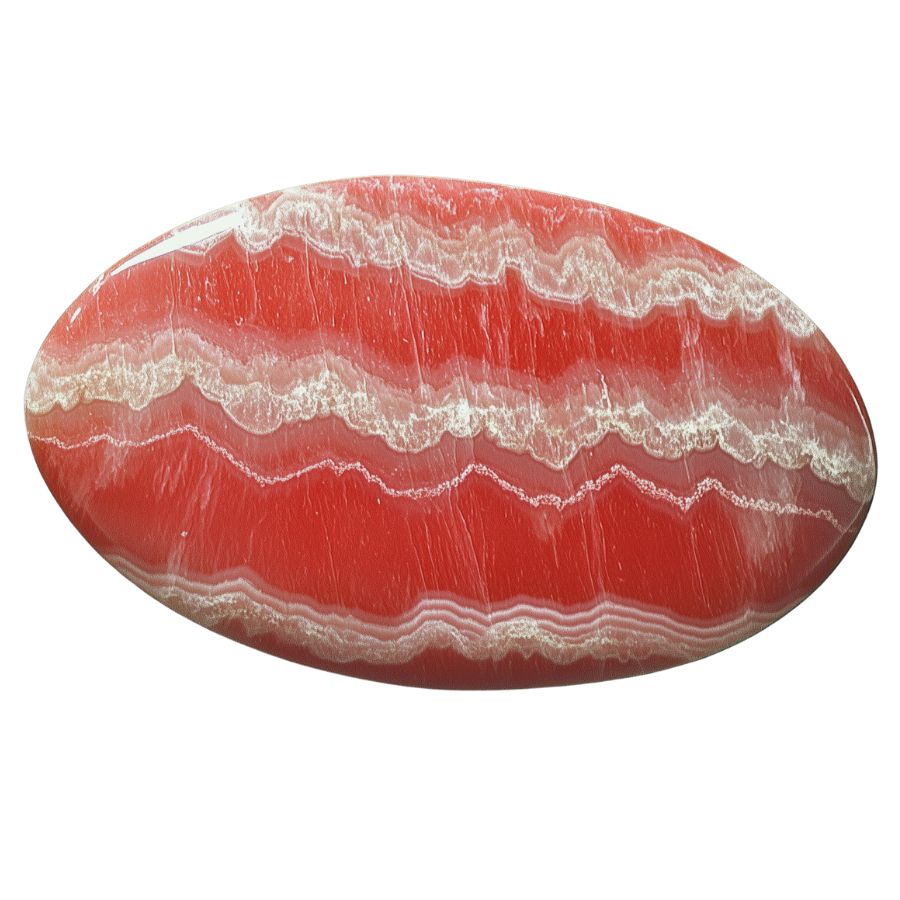
Red Rhodochrosite stands out with its bold, vibrant colors that range from bright red to deep crimson. Its intense red coloring comes from its high manganese content.
This variety can form in interesting shapes, including rhombohedral crystals and stalactite formations. When cut and polished, these formations reveal stunning internal patterns.
The crystal structure of Red Rhodochrosite allows it to form in large, well-defined specimens. These pieces often show sharp color transitions and clear crystal faces. The surface has a bright, glass-like shine when polished.
Some specimens feature dramatic color zoning, where deeper reds blend into lighter shades. This natural gradient effect makes each piece distinct and visually interesting.
Trapiche-like Rhodochrosite
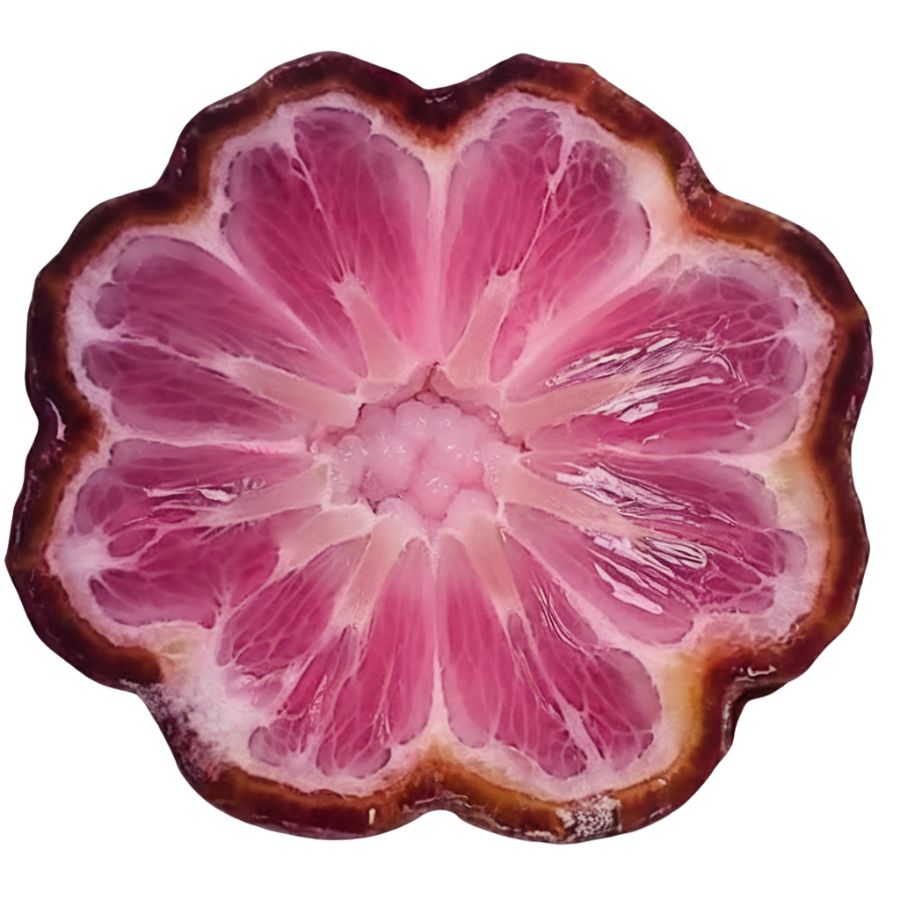
Trapiche-like Rhodochrosite showcases a remarkable star or flower-like pattern that makes it truly special. This pattern forms when crystals grow in a specific way, creating symmetrical rays that extend from the center. The result looks like a wheel with spokes or a blooming flower.
The formation process creates distinct sections within the crystal, each with its own character. These sections join at the center point, creating a natural geometric design.
When the stone is cut perpendicular to its main growth axis, its visual effect is enhanced. This orientation reveals the full beauty of the pattern and shows how the crystal sections fit together perfectly.
South African Rhodochrosite
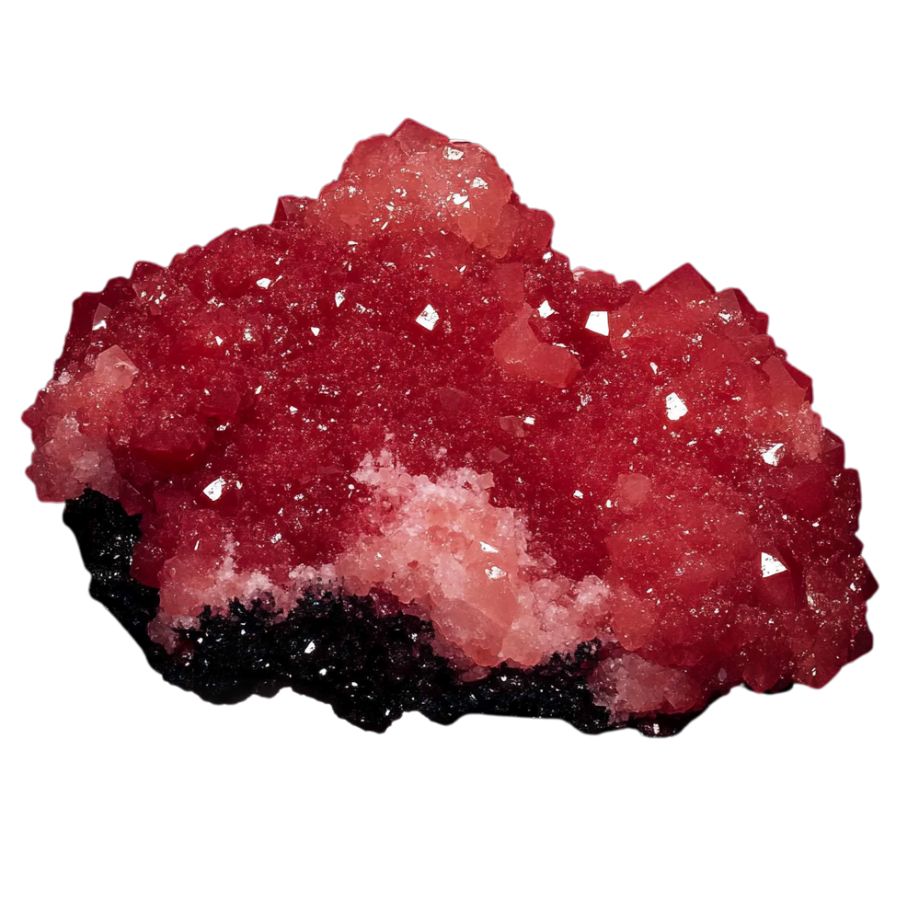
South African Rhodochrosite is known for its deep, rich blood-red color. This intense coloring sets it apart from other varieties. The stone often shows excellent clarity and depth of color which makes it particularly striking.
The internal structure of this variety creates interesting optical effects. When light passes through the stone, it can create a subtle glow that enhances its natural beauty. The crystal structure allows for excellent polish, bringing out the stone’s natural luster.
Many specimens show distinctive growth patterns that form during crystallization. These patterns can create interesting visual effects, from subtle color variations to dramatic geometric designs. The combination of deep color and natural patterning makes each piece unique.
Argentine Rhodochrosite
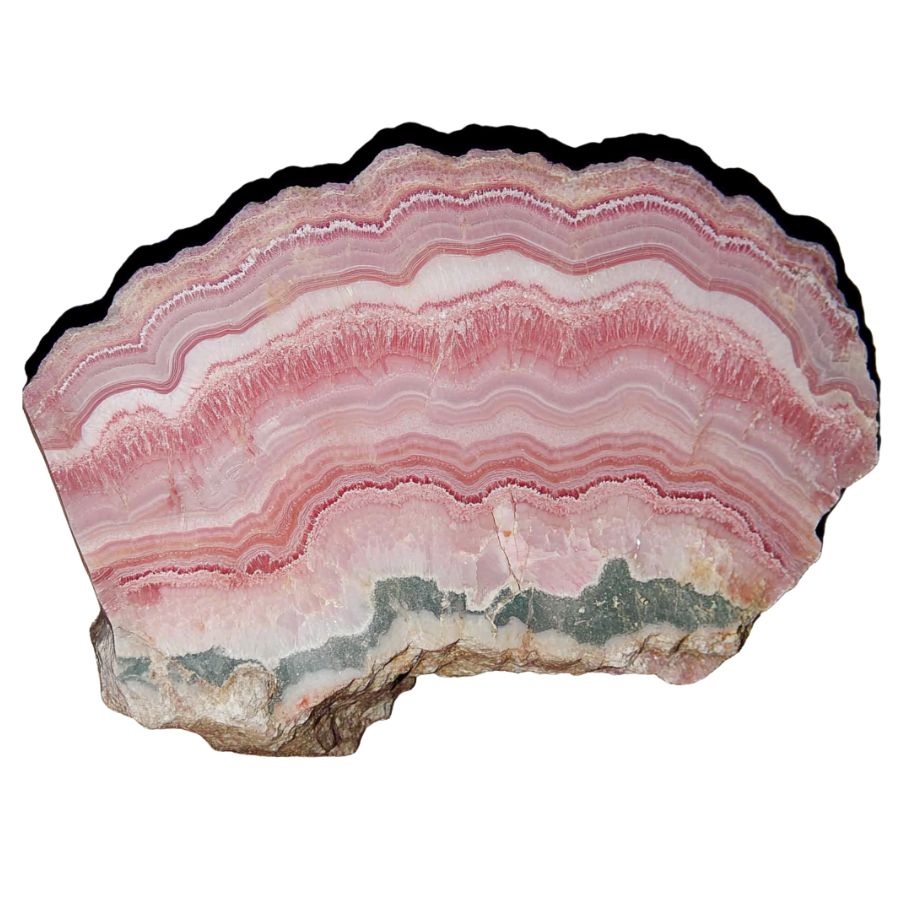
Natural bands of pink and white create stunning patterns across this remarkable stone. Delicate layering resembles fine marble artwork, making each piece unique. The colors shift between pale pink and deep red tones.
Historic significance adds to its charm as the “Inca Rose.” Ancient civilizations treasured these stones for their exceptional beauty. Many specimens show perfect crystal formations that catch and reflect light beautifully.
Exceptional purity sets Argentine specimens apart from others. Crystal formations often grow in perfect rhombohedral shapes. Traditional cutting methods reveal intricate internal patterns that collectors prize.
Colorado Red Rhodochrosite

Brilliant rose-red colors distinguish this remarkable variety. Transparent specimens showcase exceptional clarity and fire. Natural light brings out deep crimson undertones that seem to glow from within.
Outstanding crystallization creates sharp, well-defined faces. Remarkable internal structures form during slow growth periods.
Superior brilliance makes these stones stand out in collections. Natural light reveals complex internal reflections. Fresh specimens maintain their vivid coloring over time. Special cutting techniques enhance the stone’s natural beauty.
Banded Rhodochrosite
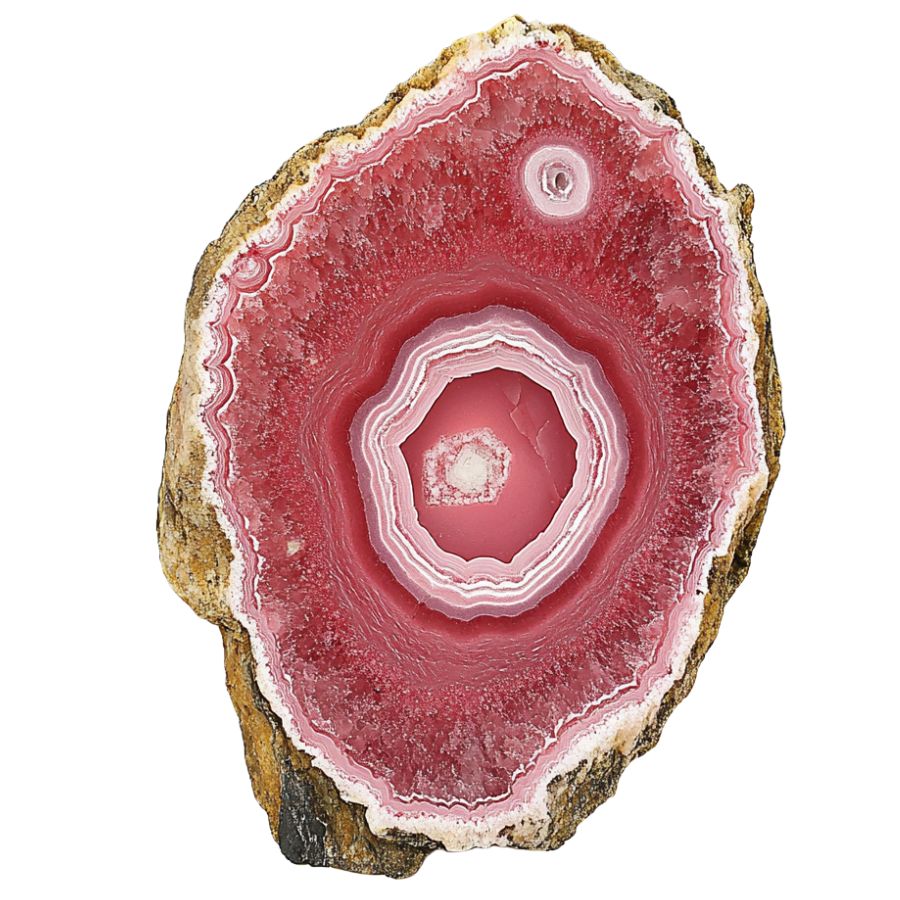
Concentric circles create fascinating patterns throughout this stone. Dramatic bands alternate between light and dark pink shades. Nature’s artistry reveals itself in each cross-section.
Perfect specimens form when mineral-rich water drips slowly over time. Natural processes create stalactite formations with distinct ring patterns.
Multiple layers build up over time to create unique patterns. Natural variation ensures no two pieces look exactly alike. Perfect cross-sections show complete circular patterns.
Peruvian Rhodochrosite
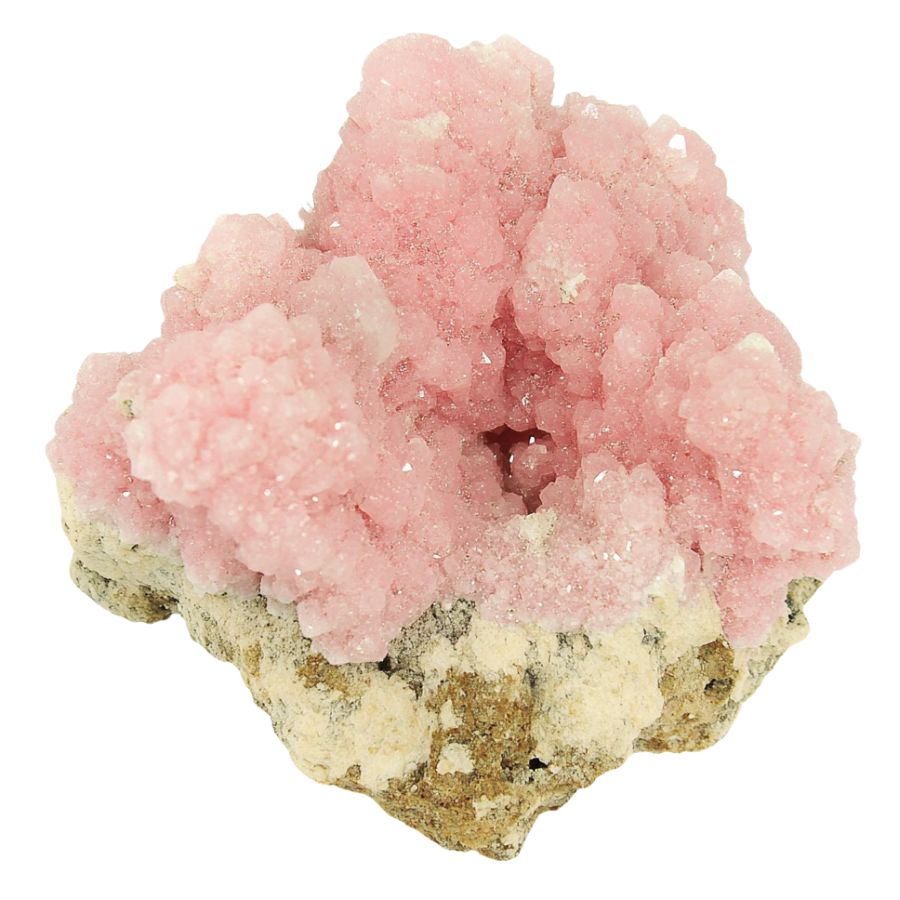
Peruvian Rhodochrosite exhibits a unique blend of pink tones with distinctive crystalline qualities. These stones often develop with exceptional clarity and a glass-like shine.
Crystal formation in these specimens tends to create angular patterns rather than rounded bands. This geometric growth pattern results in fascinating internal architectures that catch and reflect light in unique ways.
The combination of clarity and internal patterns makes these stones particularly fascinating under magnification. Collectors can observe minute details of crystal growth and formation that provide insights into the stone’s development process.
What Rough Rhodochrosite Look Like?
Rhodochrosite in its rough form can be tricky to spot, but once you know what to look for, it’s quite distinctive. Here’s how to recognize Rhodochrosite in its natural state.
Look for the Signature Pink-to-Red Color Range
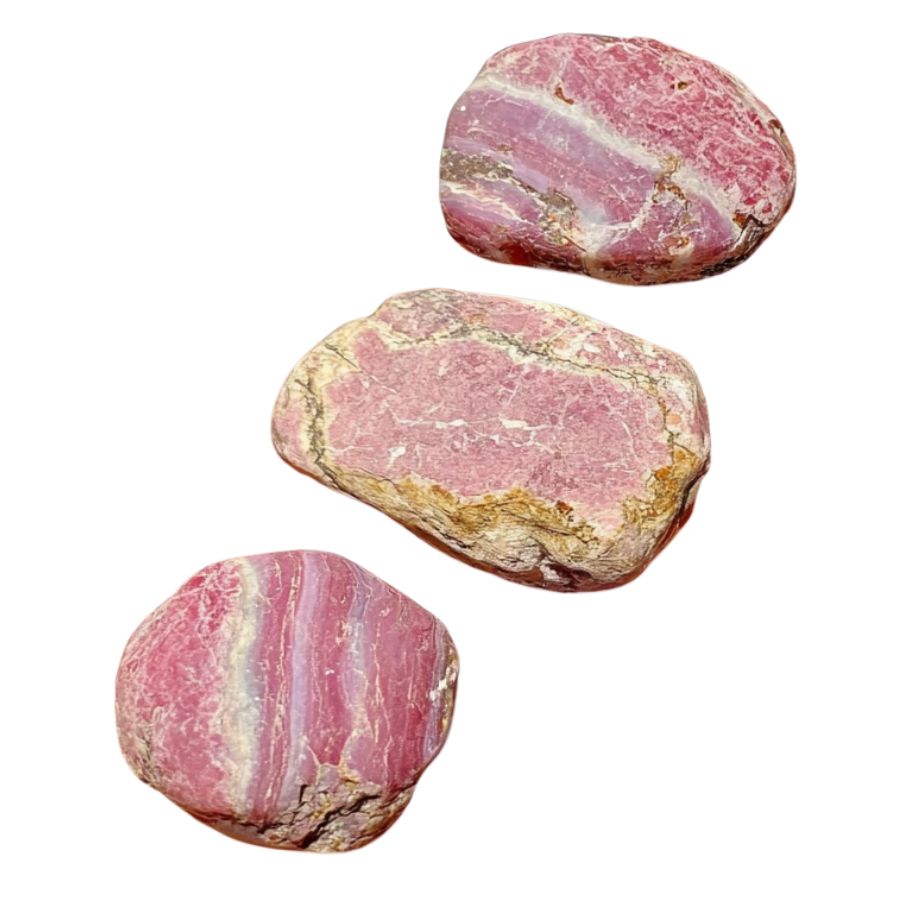
The most obvious telltale sign is its color – typically a warm, rosy pink to deep red. But here’s the thing: it’s not just one solid color. You’ll often spot subtle bands or zones of different pink shades.
Sometimes, you might see hints of brown or even light orange. Don’t dismiss it if it’s not perfectly pink – natural rhodochrosite can be surprisingly varied. The deeper, more saturated reds usually indicate higher-quality specimens.
Check for the Distinctive Crystal Structure
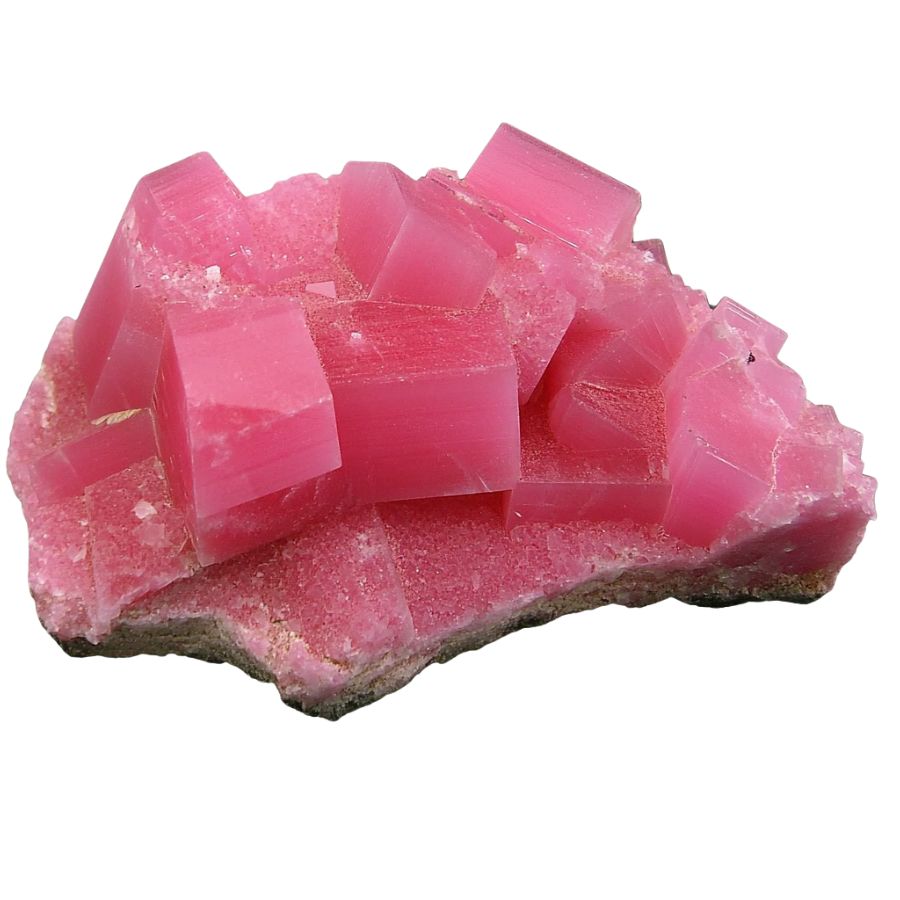
Unlike many minerals, rough rhodochrosite often forms in rhombohedral crystals. Look for angular edges and faces that meet at about 73 degrees. Sometimes you’ll find it in curved, saddle-shaped crystals (super unique!).
The crystals can be transparent to translucent, and they might appear in clusters or as individual specimens.
Examine the Surface Texture and Patterns
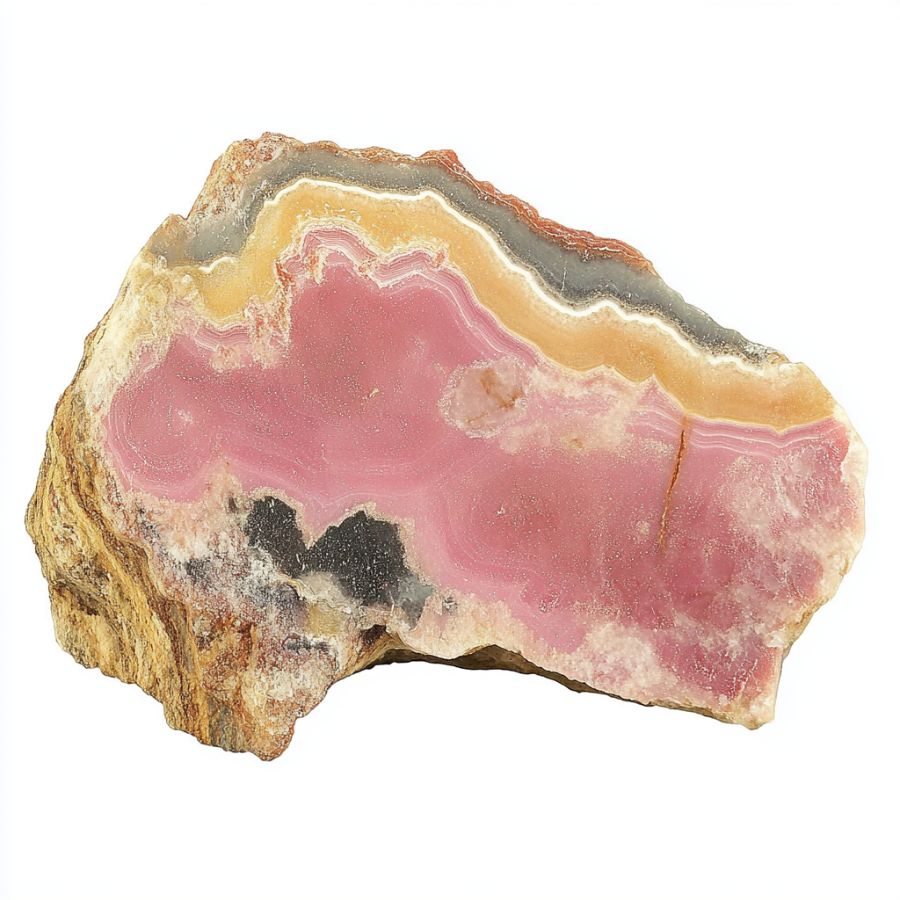
Run your fingers over the surface – rhodochrosite typically has a pearly to vitreous (glass-like) luster. Fresh breaks will show this best.
You might notice concentric banding patterns, especially in massive specimens. These bands often alternate between lighter and darker shades of pink. The surface might feel slightly smooth but not quite as glassy as quartz.
Test the Hardness and Fragility
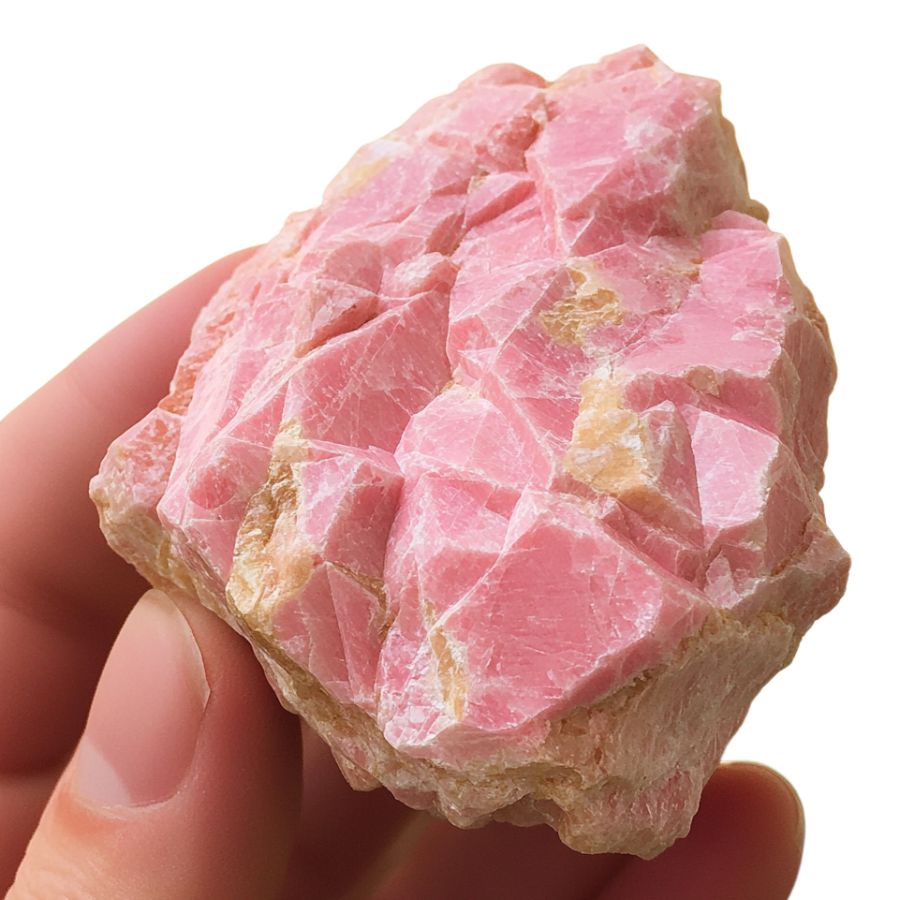
Here’s a crucial tip: rhodochrosite is relatively soft (3.5-4 on the Mohs scale). Try scratching it gently with a copper penny – if it scratches easily, you might have rhodochrosite.
Be gentle though! It’s pretty delicate and can break along cleavage planes. This softness and brittleness help distinguish it from similar-looking minerals like rose quartz, which is much harder.
A Quick Request About Collecting
Always Confirm Access and Collection Rules!
Before heading out to any of the locations on our list you need to confirm access requirements and collection rules for both public and private locations directly with the location. We haven’t personally verified every location and the access requirements and collection rules often change without notice.
Many of the locations we mention will not allow collecting but are still great places for those who love to find beautiful rocks and minerals in the wild without keeping them. We also can’t guarantee you will find anything in these locations since they are constantly changing.
Always get updated information directly from the source ahead of time to ensure responsible rockhounding. If you want even more current options it’s always a good idea to contact local rock and mineral clubs and groups
Tips on Where to Look
Rhodochrosite is a pink to rose-red mineral that often forms in veins and cavities. Here’s where you can typically find this beautiful stone while rockhounding in accessible locations across the US.
Abandoned Mine Areas
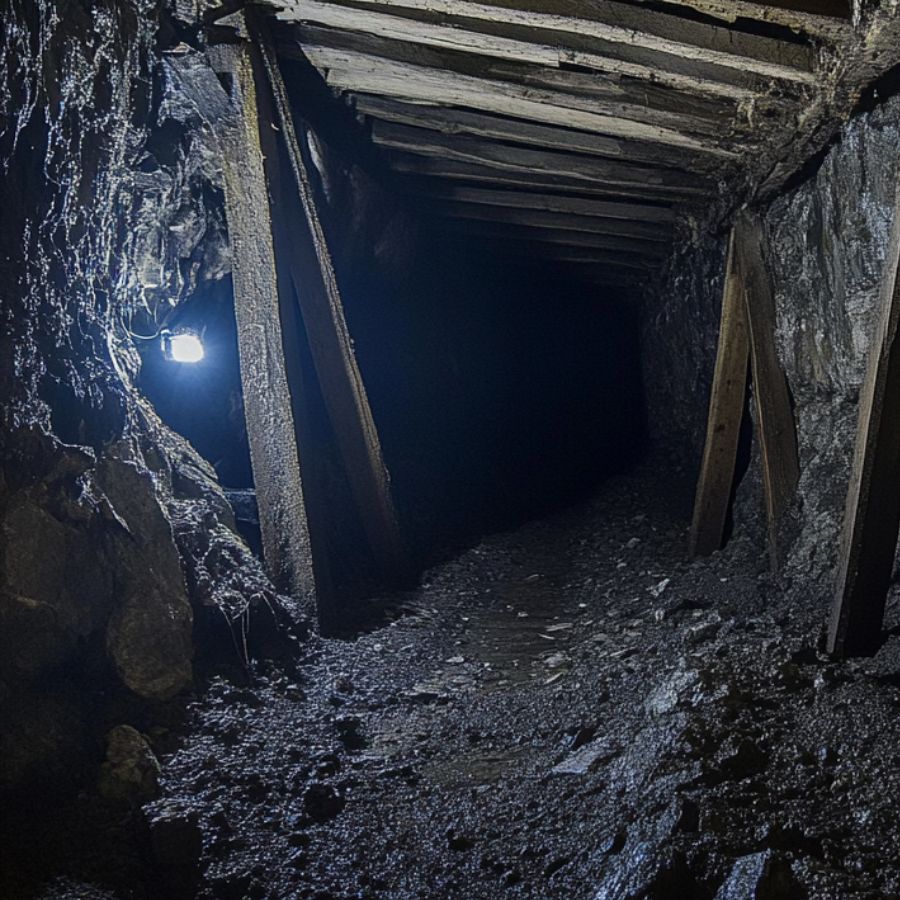
Old mines are great spots to find rhodochrosite. Check the mine dumps and tailings piles where miners discarded unwanted material. These areas often contain smaller pieces that weren’t commercially valuable but are perfect for collectors.
Look for pink-colored rocks in manganese-rich waste piles. The stone frequently appears alongside black manganese minerals, which can serve as a helpful indicator when searching.
Sometimes, you might get lucky and find specimens with beautiful banding patterns that were overlooked during mining operations.
Sedimentary Rock Formations
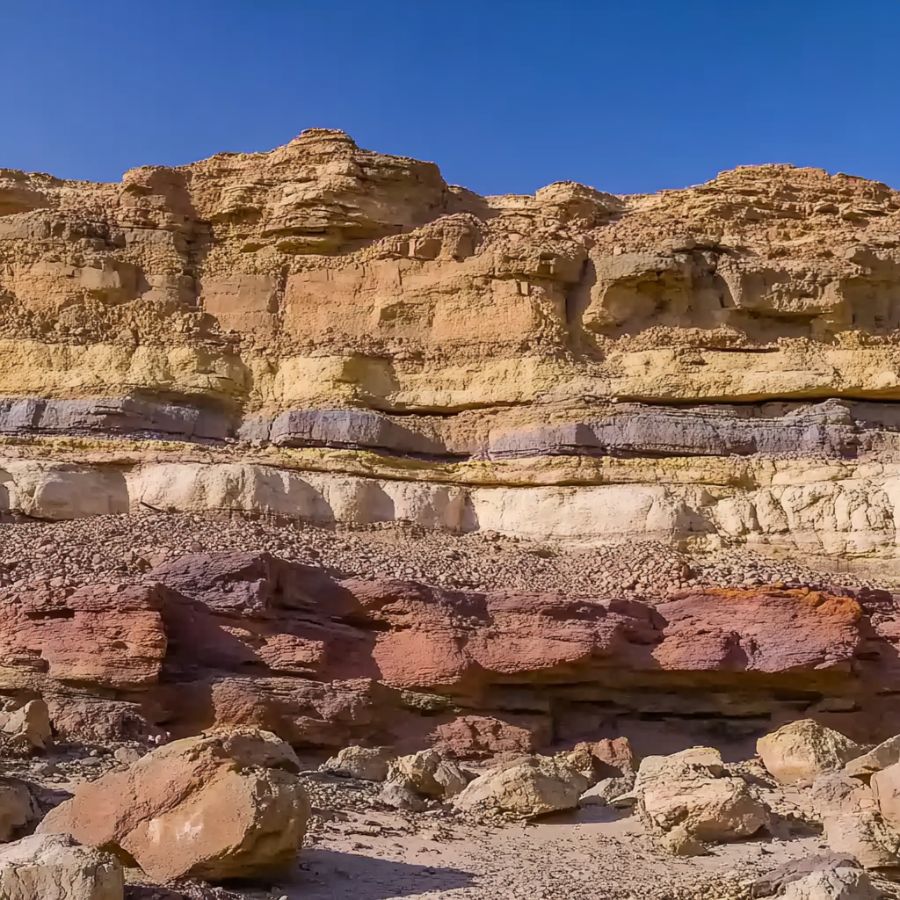
Many sedimentary rocks, especially those containing lots of manganese and calcium carbonate, can host rhodochrosite. Look for areas where limestone and dolomite are common. The stone often forms in the cracks and spaces between these rocks.
While exploring these formations, pay special attention to areas where water has carved out natural exposures, as these spots might reveal hidden rhodochrosite deposits that have been naturally weathered out over time.
Mountain Stream Beds
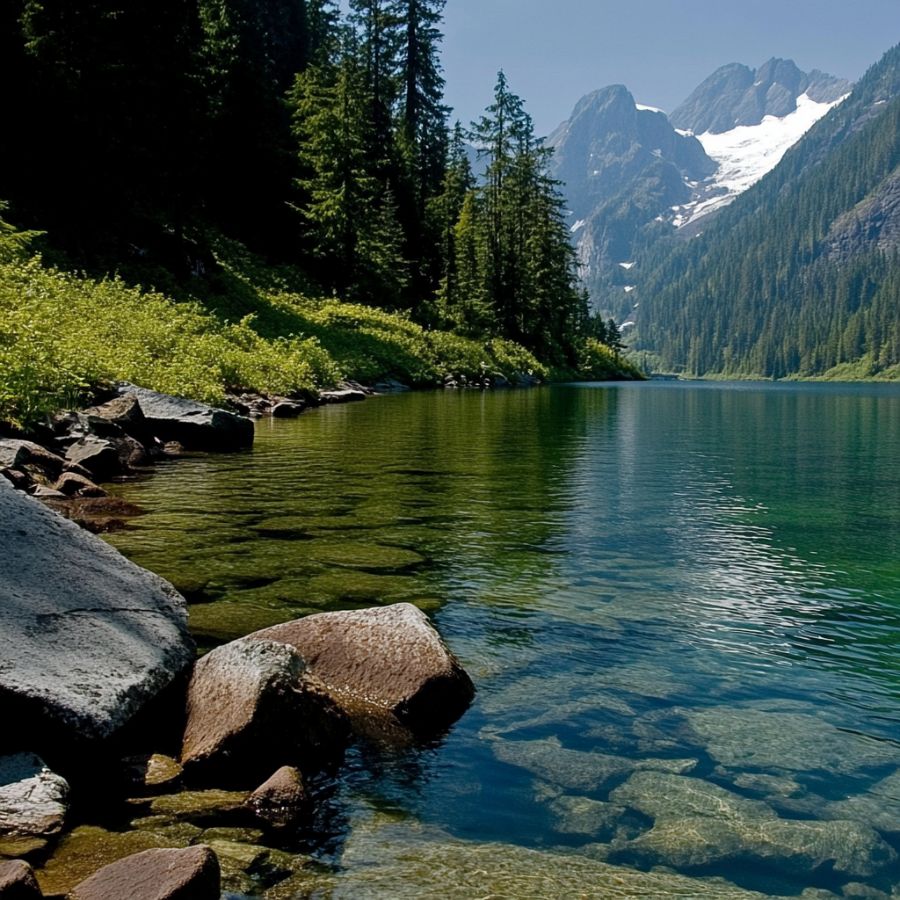
Stream beds in mountainous regions are excellent places to search. Focus on areas where the water has cut through manganese-rich rock formations, as the stream’s natural tumbling action often exposes and smooths rhodochrosite pieces.
During your search, concentrate on spots where the water slows down and creates natural collection points, such as behind large boulders or in quiet pools, because these areas tend to accumulate heavier minerals including rhodochrosite fragments that have broken free from their original source.
Some Great Places To Start
Here are some of the better places in the state to start looking for Rhodochrosite:
Always Confirm Access and Collection Rules!
Before heading out to any of the locations on our list you need to confirm access requirements and collection rules for both public and private locations directly with the location. We haven’t personally verified every location and the access requirements and collection rules often change without notice.
Many of the locations we mention will not allow collecting but are still great places for those who love to find beautiful rocks and minerals in the wild without keeping them. We also can’t guarantee you will find anything in these locations since they are constantly changing.
Always get updated information directly from the source ahead of time to ensure responsible rockhounding. If you want even more current options it’s always a good idea to contact local rock and mineral clubs and groups
Alberta
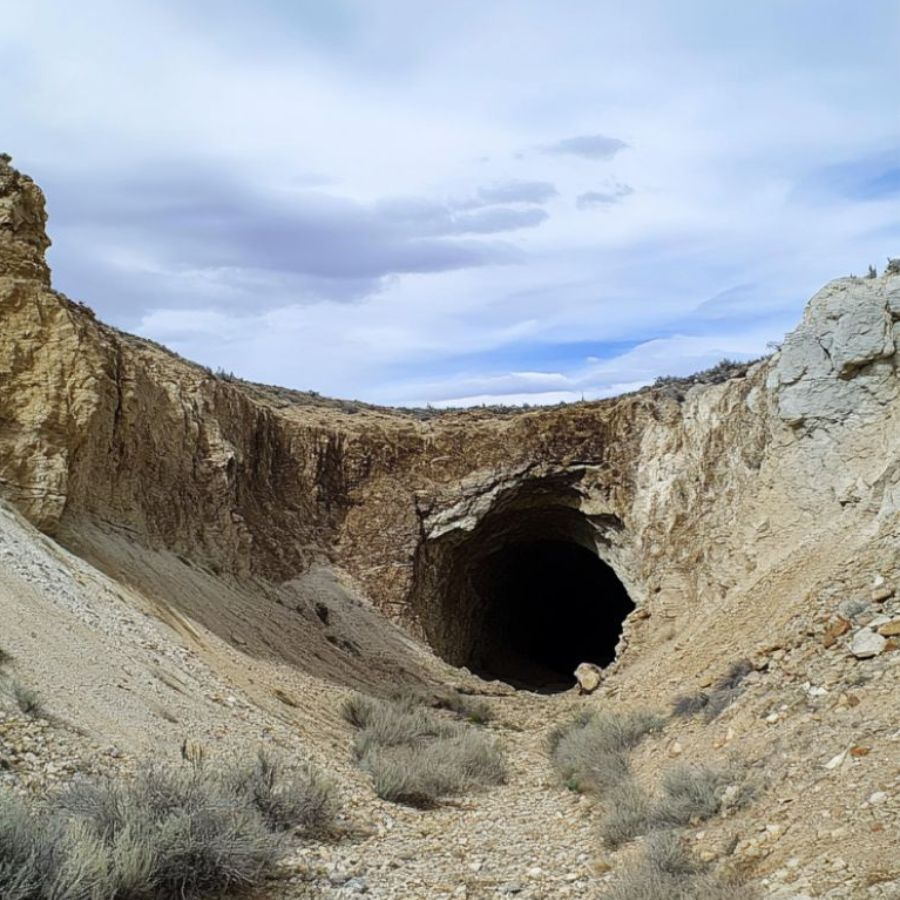
Alberta is a small community in Baraga County in Michigan’s Upper Peninsula. It was once a sawmill town built by the Ford Motor Company. The area has old Precambrian rock formations that make it special for rock collectors.
Rhodochrosite can be found at the Taylor Mine, which is about 2 miles north of Alberta, just off old U.S. 41. Look for the pink crystals inside cavities of dark manganese oxide rock. The best place to search is near the small prospect pit close to the main water-filled hole.
Focus on the northeast part of section 9 in this area. The rhodochrosite here forms beautiful pink rhombohedral crystals that stand out against the dark background rock. These specimens are fairly small but their bright color makes them worth searching for.
The surrounding area also has interesting granite and metamorphic rocks, making Alberta a good stop for anyone interested in Michigan’s mineral treasures.
Iron River
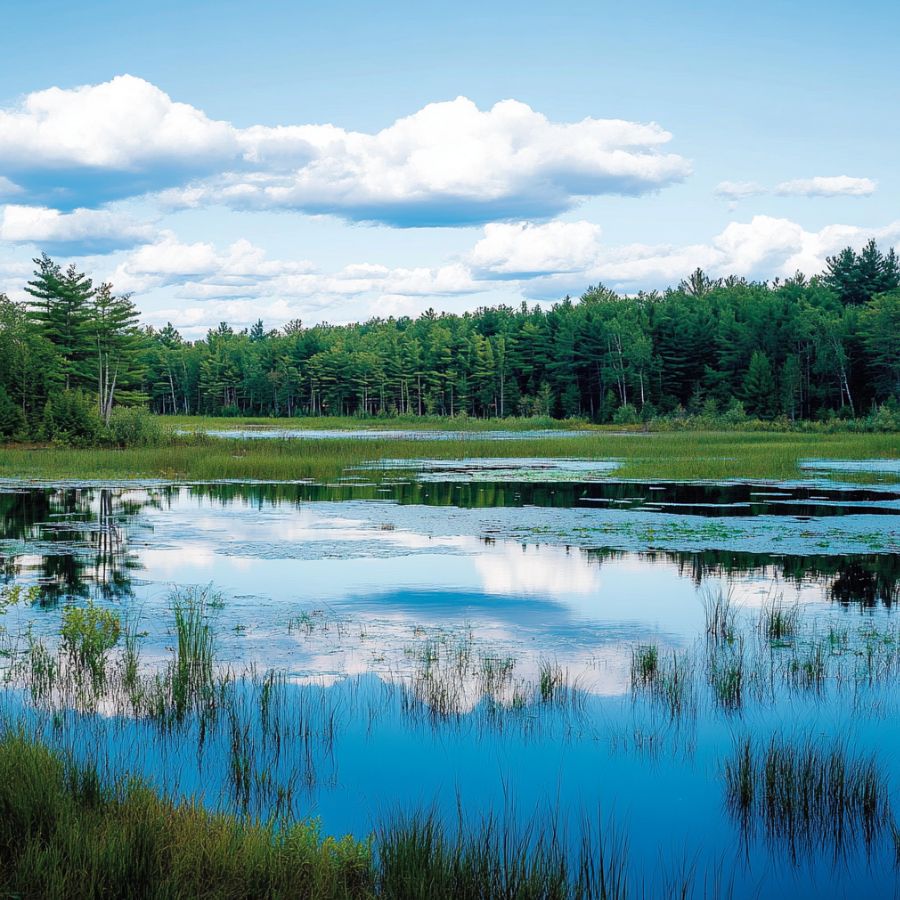
Iron River sits in Upper Peninsula surrounded by forests and lakes. This city has a rich mining history that makes it special for mineral collectors. The area sits on very old Precambrian rocks that contain many interesting minerals.
Rhodochrosite has been found in several mines around Iron River. The Sherwood Mine in the Mineral Hills area has produced some nice specimens. The Homer Mine is another good spot where this pink mineral has been discovered.
When hunting for rhodochrosite here, look for the rose-colored crystals often mixed with other minerals. At the Homer Mine, it’s sometimes found alongside hetaerolite, a dark brown-to-black mineral that creates a striking contrast.
The whole Iron River-Crystal Falls district has special rock formations like the Dunn Creek Slate and Riverton Iron Formation. These rocks formed over a billion years ago and now hold treasures for today’s collectors. The area’s iron mining background makes it a fascinating place to explore.
Gogebic Area

The Gogebic Area is famous for its long history of iron mining and beautiful forests. The land here holds rocks that are nearly 2 billion years old!
Rhodochrosite can be found in several old mines throughout the Gogebic Iron Range. Small amounts of this pink mineral appear in the unaltered iron formations. When searching, look closely at rocks from the old mine dumps and exposed rock faces.
The area’s special geology comes from ancient iron-rich sediments that settled in a shallow sea long ago. These sediments later turned into mountains as tall as the European Alps! About 1 billion years ago, volcanic activity changed these rocks and made the iron deposits even better.
The Ironwood Formation, a key rock layer here, has alternating bands of iron-rich materials. Each layer tells a story about Earth’s past.
Besides rhodochrosite, you might also find hematite, magnetite, and siderite while exploring this mineral-rich region.
Houghton Township
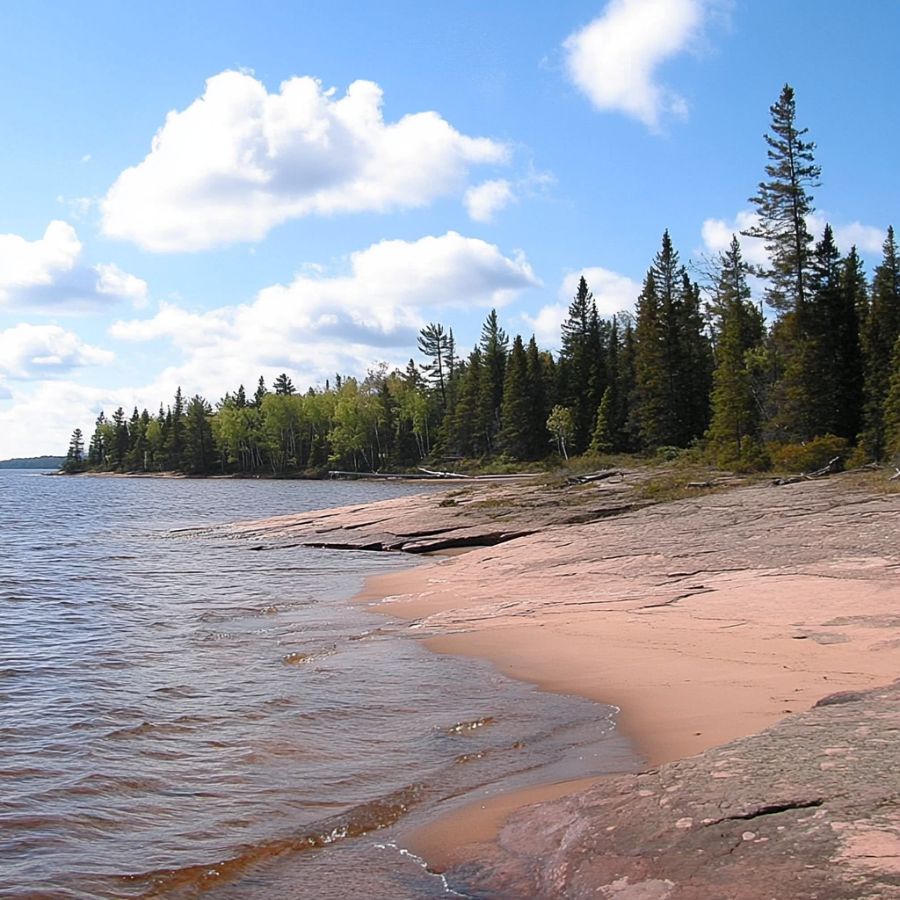
Houghton Township is found on the Keweenaw Peninsula that stretches into Lake Superior. This area includes the small community of Central, once a busy copper mining town. Today, it draws rock collectors from across the state.
Rhodochrosite has been confirmed at the Central Mine in this township. The pink mineral stands out against the darker host rock. When looking for it, pay attention to areas where other minerals like copper are present.
Ancient volcanic activity shaped this whole region. Massive lava flows created the basalt rocks that dominate the landscape. Mount Houghton, a volcanic dome in the area, shows how powerful these eruptions were.
Many collectors visit Houghton Township for more than just rhodochrosite. The Central Exploration Mine is famous for gem-quality chlorastrolite (Michigan’s state gem), native copper, and beautiful datolite specimens.
The Keweenaw Fault runs through the area, creating dramatic cliffs and influencing where minerals can be found. This geological feature has helped make this region one of Michigan’s mineral hotspots.
Palmer

Palmer is located in Marquette County. This small community grew around iron ore mining operations. The Marquette Iron Range runs through this area, creating unique opportunities for mineral collectors.
The Wheat Mine in Palmer is the main spot to look for rhodochrosite. This pink mineral forms alongside several other interesting minerals in the rocks here. Old mine dumps and exposed rock faces often reveal these treasures to careful searchers.
Besides rhodochrosite, the Wheat Mine has produced chloritoid and orthoclase specimens. Each mineral tells part of the area’s geological story.
Local mineral clubs sometimes organize field trips to Palmer, helping collectors find the best spots. The nearby A.E. Seaman Mineral Museum can provide more information about the area’s mineral wealth.
Places Rhodochrosite has been found by County
After discussing our top picks, we wanted to discuss the other places on our list. Below is a list of the additional locations along with a breakdown of each place by county.
| County | Location |
| Iron | Campbell-Sherwood Prospect |
| Iron | Chicagon mine |
| Iron | Homer Mine |
| Iron | Sherwood Mine |
| Iron | Cannon Mine |
| Keweenaw | Central Mine |
| Marquette | Champion Mine |
| Marquette | Cambria-Jackson Mine |
| Marquette | McComber Mine |
| Marquette | Tracy Mine |


